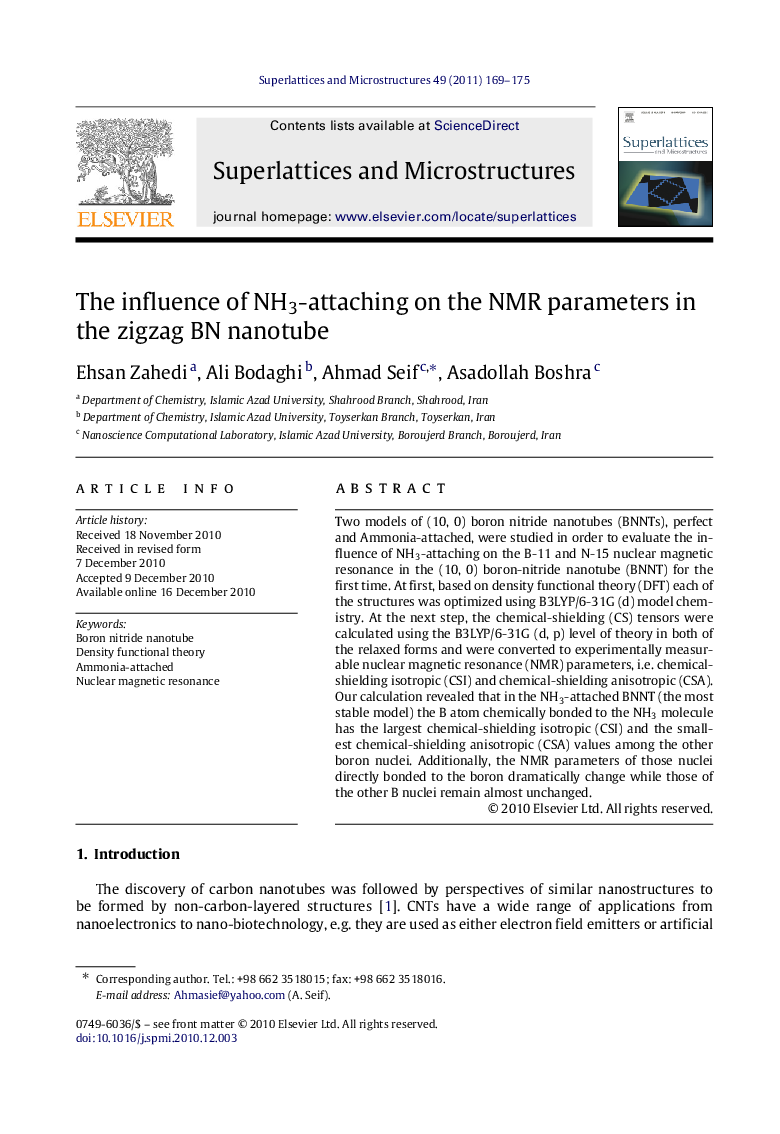| Article ID | Journal | Published Year | Pages | File Type |
|---|---|---|---|---|
| 1554206 | Superlattices and Microstructures | 2011 | 7 Pages |
Two models of (10, 0) boron nitride nanotubes (BNNTs), perfect and Ammonia-attached, were studied in order to evaluate the influence of NH3-attaching on the B-11 and N-15 nuclear magnetic resonance in the (10, 0) boron-nitride nanotube (BNNT) for the first time. At first, based on density functional theory (DFT) each of the structures was optimized using B3LYP/6-31G (d) model chemistry. At the next step, the chemical-shielding (CS) tensors were calculated using the B3LYP/6-31G (d, p) level of theory in both of the relaxed forms and were converted to experimentally measurable nuclear magnetic resonance (NMR) parameters, i.e. chemical-shielding isotropic (CSI) and chemical-shielding anisotropic (CSA). Our calculation revealed that in the NH3-attached BNNT (the most stable model) the B atom chemically bonded to the NH3 molecule has the largest chemical-shielding isotropic (CSI) and the smallest chemical-shielding anisotropic (CSA) values among the other boron nuclei. Additionally, the NMR parameters of those nuclei directly bonded to the boron dramatically change while those of the other B nuclei remain almost unchanged.
